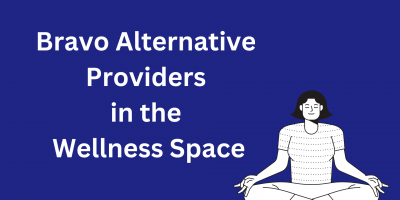
The Link Between Work Productivity and Sleep
As sleep deprivation significantly affects work performance, is the tradeoff between employees working long hours or being available 24/7 worth it?

Once a nice-to-have incentive, employee wellness programs have become a staple in the workplace.
Statistics indicate that up to 69% of employers prioritize well-being to improve their benefits, while another 64% plan to invest more in this.
As their popularity grows, employers look for ways to make them more accessible.
Enter HR technology.
With the growth of wellness tech and the advent of Human Resource Information Systems (HRIS), organizations now have powerful tools to streamline and enhance their health and well-being initiatives.
In this article we explore all aspects of HRIS in wellness management, including integration, benefits, challenges, and future trends.
The 2022 Global Benefits Attitude Survey by Willis Towers Watson reveals that employees seek health benefits in addition to pay and job security.
In fact, their importance in attracting and retaining talent has reached a 10-year high.
The report also showed a strong link between a culture built on well-being and positive employee outcomes.
Employee wellness programs play a crucial role in accomplishing this.
They encompass different activities targeting everything from physical and emotional health to financial and social well-being.
Examples of employee wellness programs include:
Some employers also make flexible work schedules and remote work part of their wellness strategies.
Studies show the benefit of a better work-life balance that these bring can increase job performance and productivity.
Whether one or a combination of more initiatives, these contribute to a healthier, happier, and more engaged workforce.
Exceeding their importance for employees, they have also proven to be an excellent business opportunity for organizations.
Now, the question is, how can HR tech help?
The human resources department plays a crucial part in promoting employee well-being. They often oversee a program’s implementation, employee participation and engagement, and the outcome.
However, in an already hectic environment, the complexity of these tasks makes them costly and time-consuming.
Thus, HR technology emerged as a solution to improve efficiency, making organizational goals more manageable while cutting down time and expenses.
Valued at $21.6 billion in 2021, predictions indicate that the global HR software market could reach over $38 billion by 2027, affirming its growing use and role in businesses of all sizes.
Innately, this also impacts employee wellness.
With that, the role of HR technology has expanded to employee wellness programs, making them:

From health apps and fitness trackers to telemedicine and mental health apps, wellness tech revolutionized how we approach employee benefits.
Now, companies are going the extra mile by leveraging HR technology to manage better and track their wellness progress.
Simply put, HR tech can automate the administrative aspects, reduce manual work, and help businesses make data-driven decisions. For example, by analyzing employee data, like their health and engagement, it can fine-tune corporate wellness programs to fit employees’ needs and get the best ROI.
HRIS is an excellent illustration of this.
HRIS is a software solution companies use to efficiently manage data and automate many HR functions, including administrative tasks, accounting, performance management, etc.
Statistics show that its functionality is the biggest motivator for deploying HRIS in companies of all sizes, especially in the U.S., where 73.45% of employers use this software. Other reasons include increased efficiency, growth support, and consolidating systems.
Once integrated, these factors also complement wellness strategies.
With all information within one system, the integration ensures everything is easily accessible to HR and the employees.
It also enables real-time data monitoring and analytics.
What this does is help HR professionals to keep track of every aspect of the initiative, including:
Then, they can use these insights to make data-driven decisions for more targeted initiatives.
Integrating well-being strategies with HRIS also ensures that all initiatives, as well as relevant information, challenges, and support networks, are readily accessible to employees through the platform.

There’s a reason why companies turn to HRIS.
This technology comes with specific features and capabilities that make it a powerful tool for effective wellness management, including:
On the one hand, we have lower health costs, employee productivity, and better engagement. On the other, we have time and cost savings through efficient data management.
Incorporate HRIS with wellness solutions, and companies and their employees can benefit from both.
However, saying this is a complex process would be an understatement.
Since it doesn’t have a one-size-fits-all approach, implementing HRIS wellness solutions requires a strategic approach.
To do that, companies should consider:
Only then should they continue with the remaining steps like using an integration testing tool, engagement initiatives, and results monitoring.
HRIS integration connects this system with other software applications, systems, or organizational databases.
In this case, it connects with wellness software or large employee databases to track the metrics of different initiatives.
Thus, whether it’s health and wellness, flexible work arrangements, or other employee initiatives, HRIS provides a centralized platform for workers to access information, participate in relevant programs, and stay informed.
After successful integration, the next and possibly biggest challenge is to get employees enthusiastic about the program and actively engaging.
While HRIS makes this easier by providing a centralized platform for easy participation, companies should also consider other ways of motivating their workforce.
Incentives are usually the way to go, as well as employee recognition and building a culture around health and wellness.
A crucial aspect of wellness initiatives is team building.
For example, fitness challenges, shared goals, or even friendly competition can all inspire and promote teamwork among participants.
When we weigh HR technology in this, it becomes even easier for employees to communicate and connect, bringing a sense of community and encouraging a collective approach to well-being.

After an extensive overview of HRIS advantages and a brief discussion on the significance of corporate wellness, let’s dive deeper into the benefits of employee wellness programs.
From health to financial advantages, here’s what implementing wellness programs means for employers and their employees.
Improved health and well-being are immediate employee wellness program benefits. Depending on the type, they can increase energy levels, reduce or prevent health issues, and improve mental health.
A survey by UnitedHealthcare shows these programs positively impact health for more than half of the workforce (53%).
Besides, of those:
The UnitedHealthcare survey shows that, for 62% of the workforce, a wellness program led to better productivity.
Moreover, according to the American Psychological Association, nine in ten employees feel motivated to perform their best in workplaces run by leaders who support well-being initiatives.
Research consistently shows a positive correlation between employee well-being and job performance, emphasizing that organizations investing in wellness observe higher levels of productivity and efficiency.
Obviously, healthy and engaged employees are inherently more productive.
Workers who feel physically and mentally well are better equipped to focus on their tasks, exhibit creativity, and contribute actively to team objectives.
The financial aspect is another shared benefit between companies and individuals.
Early detection, health education, and access to different resources can reduce preventable medical expenses.
In fact, some sources reveal that for every dollar spent on employee wellness programs, the company saves $3.27 on medical and $2.73 on absenteeism costs.

Finally, investing in wellness can contribute to a positive and supportive work culture. It’s an aspect that shouldn’t be overlooked since it’s closely connected to employee satisfaction.
For example, statistics show that 70% of workers who enrolled in a wellness program reported higher satisfaction. At the same time, studies show that for 54% of employees it also improves employee morale.
Happy and satisfied employees tend to be more loyal and engaged, making a full circle when it comes to employee wellness program benefits.
While the functionalities and advantages of HRIS are many, there are some challenges to consider.
Cost is the main one since this software’s price, maintenance, and management go in the thousands. In fact, according to SoftwarePath, HRIS costs around $210 per user per month on average. However, the price largely depends on the company size.
Adding the expense of a wellness program makes budget restraints an even bigger issue, which is why it’s essential to prioritize employee wellness initiatives based on their impact.
HR and employee training can pose another limitation.
Thus, providing continuous training for HR on system usage and data handling is crucial.
Also, it’s worth noting that some employees will show resistance to adopting new technologies. Workshops and incentives can help them engage, while an intuitive and easy-to-use platform can encourage a smooth transition.
Data privacy and security cannot be overlooked either since these systems carry sensitive employee data, posing a major concern for companies.
With cyber-attacks happening regularly, companies should ensure robust security measures, including encryption, secure access controls, and compliance with data protection regulations.
Now, HRIS wellness solutions come with their own set of challenges.
Although cost, privacy, and employee limitations are all applicable as well, using employee wellness programs through HRIS also sets forth the following:
By acknowledging and proactively addressing these challenges, organizations can pave the way for the effective integration of HR technology in employee wellness programs.
The growing movement in HR tech and corporate wellness indicates the necessity for employee wellness programs through HRIS to become part of modern organizational strategies.
As for future trends, it remains to be seen.
However, companies are turning more towards artificial intelligence, cloud-based solutions, machine learning, and advanced data analytics. These are already influencing the ever-evolving HR tech landscape and are likely to do so in the future.
Finding their way into corporate wellness could also improve the effectiveness and personalization of these initiatives.
From AI-driven wellness recommendations to better behavioral insights and predictive analytics, merging HR technology with employee wellness programs could, in the long run, improve how we view workers’ health while driving organizational success.
Disclosure: Some of the products featured in this blog post may come from our partners who compensate us. This might influence the selection of products we feature and their placement and presentation on the page. However, it does not impact our evaluations; our opinions are our own. The information provided in this post is for general informational purposes only.
Content Writer at Shortlister
Browse our curated list of vendors to find the best solution for your needs.
Subscribe to our newsletter for the latest trends, expert tips, and workplace insights!

As sleep deprivation significantly affects work performance, is the tradeoff between employees working long hours or being available 24/7 worth it?

Explore alternatives to Humana’s EAP and work-life services, providing consumers with a list of the top vendors offering EAP and work-life benefits.

Unlock the full potential of employee wellbeing by fostering a culture that nurtures physical, emotional, social, and financial health.

Bravo may be a comprehensive provider, but the following wellness alternatives introduce features, tools, and focus areas that address a broad spectrum of employee needs and employer objectives.
Used by most of the top employee benefits consultants in the US, Shortlister is where you can find, research and select HR and benefits vendors for your clients.
Shortlister helps you reach your ideal prospects. Claim your free account to control your message and receive employer, consultant and health plan leads.